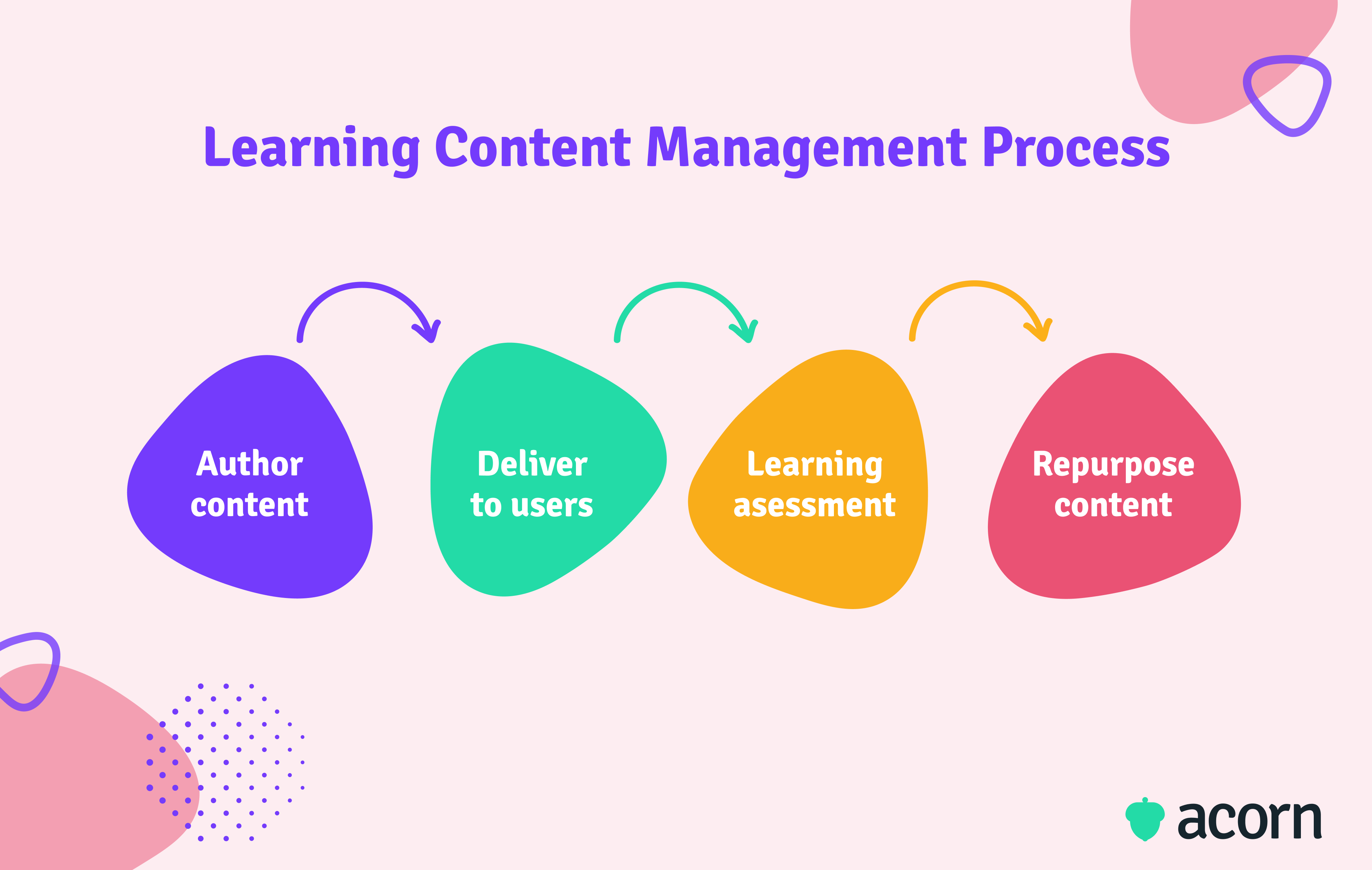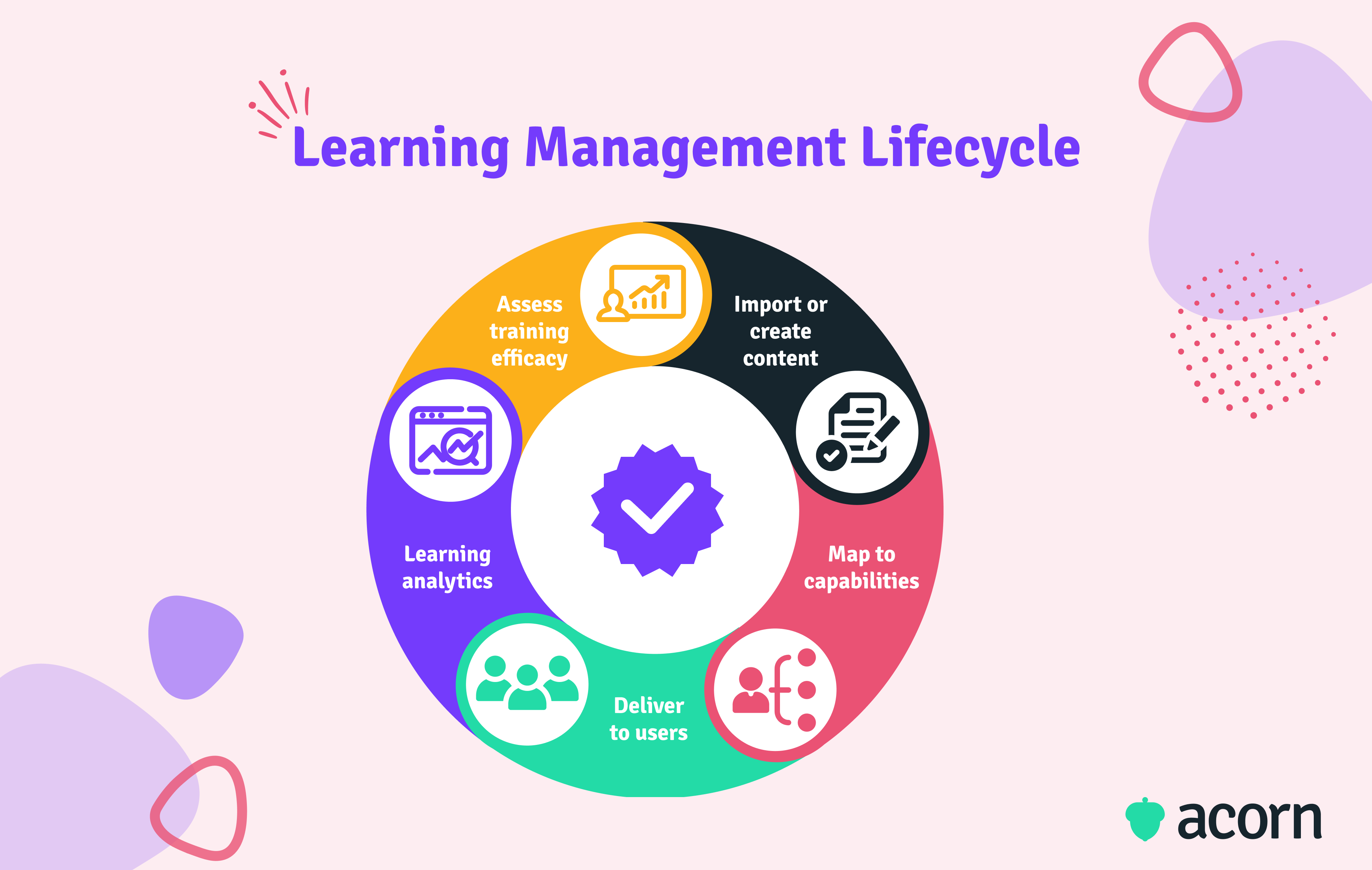Comparing Learning Content Management Systems

Not quite an LMS, definitely not a CMS or CRM… but still a solution to consider.
One of the most misunderstood technologies is the learning content management system. Amongst a sea of acronyms (LCMS, LMS, CMS, CRM…), it can be tricky to understand what your organisation needs.
When considering purchasing a learning content management system (LCMS), it’s crucial to compare systems, features and suppliers to avoid common pitfalls like cumbersome implementation, clunky user experience, wasted resources and loss of revenue.
Read on for our guide on the key differences between LMS and LCMS, as well as the important features to look for and how to compare those across platforms. For a more microscopic look at the abundance of available features and their functionalities, download our LMS Comparison Checklist.
The difference between LMS and LCMS platforms
Due to their similarities (and just plain similar acronyms), it’s tempting to use LMS and LCMS interchangeably. There are blurred lines where functionalities overlap, making things confusing for even seasoned buyers. There are a few key differences to keep in mind when selecting the right software for your organisation.
Learner vs content management
An LMS (aka learning management system) facilitates and manages more traditional forms of learning and training activities such as enrollments, face-to-face workshops, feedback, grading and social learning. Many also integrate HR and payroll functionalities, too.
LCMS specialise in creating, designing and managing single-source online training material. You would use it to build content in an authoring tool and download it as a SCORM file, and then upload it to an LMS. But while all LCMS allows you to author content, not all authoring tools are LCMS.
Intended user
The clearest difference is the end user: content creators interact with an LCMS, while learners and administrators use an LMS. The latter are used primarily in corporate learning and academic environments, as they are useful for talent management, active and interactive learning, and regulation of compliance training. LCMS are better geared towards eLearning professionals whose brand identity is woven into their online training materials.
Authoring & repurposing
LCMS allow for rapid content creation through authoring and assembling bite-size pieces of content into a variety of courses. And as content becomes single-source in LCMS libraries, the software allows you to revise and repurpose snippets of content into different formats without starting from scratch.
We’ve often heard enterprises gripe their content is not modifiable for corporate training needs. An LCMS gives you the option to rework the design of your content for an individual or affect change for an entire cohort. This is a key difference to standard LMSs, where content imported into the system is locked in that published format, and the same training catalogue is often delivered across large audiences.

Reporting analytics
Because of a clearer focus on online learning over content creation, LMSs often have more detailed tracking capabilities. An LMS can provide detailed analytics which include how long learners spent in a module, which device they were using, which pages they visited most, and how they answered certain questions. Other crucial metrics an LMS holds over an LCMS include:
Completion rates
Without understanding how many people completed a course or how long it took each to finish an activity, you’ll miss patterns that indicate low motivation or knowledge gaps.
Progress & performance
The implication for low or no progress data is a missed opportunity to create more meaningful and personalised online training experiences, with richer information, relatable material or better designed courses.
Learner satisfaction
You’ll never know if learners connect with content and instructors, if they have suggestions that would improve their experience, or if they find it helpful at all for their eLearning journey—and therefore, won’t be able to author better content—without the surveys, polls and focus groups LMS offer.
Collaboration
A feature where LCMS edge out the LMS is collaboration. Collaborative authoring allows any member of your team to work in a more agile way, by simultaneously writing, reviewing and designing content. This streamlines workflows across time zones and borders, and allows internal team members and external subject matter experts to interact in real-time.
Not to be pushed off the podium, LMSs are able to integrate with a variety of other CRM and HR systems. This gives you the ability to track specific user groups and data from other angles.
Key takeaway
Simply put, an LCMS is used to create content and an LMS delivers it to learners. It is becoming increasingly common for an LMS to have both functionalities. Broadly speaking, both platforms are SCORM compliant and allow you to host and deliver online training content.
Want to see Acorn PLMS in action?
Hit the book a free demo button here, take seconds to fill in your details, and find out how Acorn can help you succeed.
Defining your LCMS needs
Comparing technologies can be hard, not least of all when we’ve just told you how similar they are. Knowing exactly what you want from one can be even harder for first-time buyers talking to different suppliers. Our LMS Features Comparison Checklist is a detailed reference point to help you prioritise the software tools you need.
Is an LCMS right for me?
There is no one-size-fits-all solution. The “right” software really just depends on what your organisation needs. For posterity, we’ve outlined the scenarios in which you might require one or both of these platforms.
LCMS
If you aspire to create all of your content in-house, an LCMS is probably your best bet. We’ve found organisations with passive learning as their wheelhouse prefer the ability to self-author, particularly as they can quickly manage different versions with multiple collaborators. Those who also struggle to adapt and innovate their courses without detailed learner analytics might enjoy next generation LCMS reporting functionalities. These can segment data from location down to page view, allowing for better refinement of content in due course.
LMS
Often, having too many tools or systems to work across creates opportunity for error in important data, wastes resources and uses manpower in processes that could be automated. We’ve learnt many organisations necessitate an interactive and engaging online learning environment, for which an LMS is a great choice.
LMS also achieve high engagement and course completion rates, as they are easily accessible for mobile learning, remote workers, frequent travellers, and offices spread across locations, and provide detailed learner analytics good for the large cohorts usually onboarded to LMS. Design elements like quizzes and learning pathways also make these an invaluable tool for workforce and succession planning.

Integrated LCMS & LMS
It’s not always LMS vs LCMS. A blended learning management system is best for those who want harmonious integration between software and content.
The problem with not understanding the minutiae of differences between these platforms is many organisations continue to use out-of-date, inefficient authoring or eLearning management tools. This unnecessarily segments learners, forcing them to create multiple profiles and passwords to remember, and makes for piles of varying standards of reporting data. An LMS with integrated LCMS opens the doors to the flexibility and reusability of xAPI and SCORM, while blending content and learner management, and providing a smoother user and admin experience.
The 5 best LCMS features to consider when comparing platforms
Conducting a learning content management system comparison of features is the best way to select the right software for your requirements. Not all will function the way you need them to, depending on the supplier’s applicable industry.
We’ve found many organisations implement entirely the wrong authoring tool or learning management system for their needs, simply because they didn’t consider what they need and how the software will support those needs. For a comprehensive rundown of crucial features and functionalities, see our LMS Features Comparison Checklist.
In the meantime, these are our top five picks from which to build.
1. Responsive design
Never has it been more important to offer content that is accessible on all devices (from mobile to desktop) than in the age of remote working. Look for an LCMS that automatically optimises your content for different screen sizes, while letting you make manual tweaks where you see fit.
Why it’s important
Considering the impending end of Flash and Internet Explorer (RIP), a lack of accessibility across devices, locations, browsers and plug-ins may exclude subsets of your workforce or potential clients for your paid content.
2. Efficient workflows
Cloud-based software gives you the ability to store and reuse everything, from small snippets to entire modules, on a single, safe-guarded IP. This makes workflows faster, more consistent and more secure.
Why it’s important
It’s time intensive and a waste of human resources to recreate modules that already exist. And without multi-authoring functionality, you can end up with several “current” versions of content and no clear project lifecycle to reference.
3. Localisation & translations
The best LCMSs simplify translations for audiences across countries, so you can create multi-SCORM modules, in multiple languages, from one master module in your native tongue.
Why it’s important
The impact of limiting content to one language is hardest on your marketability and progress. Not only might you miss out on a greater share of your market, but if you do decide to author content manually in multiple languages, you risk making mistakes and disrupting other workflows.
4. Integrations
All LCMSs enable you to publish courses as SCORM files, but some go the extra mile and offer xAPI integrations, password/domain-protected logins, URL links and the ability to release content while offline.
Why it’s important
If you don’t adapt to individual learning needs, learners will be bogged down by static content that’s difficult for them to use and you to update. This leads down a dark path of disengaged learners and good content wasted on bad design.
5. Analytics
Good content wins the sprint, but detailed data claims the marathon. Continuously refining and improving your eLearning content comes down to understanding how your users are interacting with it, through reporting functionalities.
Why it’s important
You might miss those perfectly positioned for succession, let lagging learners slip through the cracks, or continue to bore users if you’re unaware of dry content. The effects of disinterest in continuous learning and development seep into your profitability, scalability and sustainability—because if you don’t learn, you don’t evolve, and you don’t grow.
Key takeaways
The difference in choice here really comes down to what you need a system for. If you want to create and deliver learning content, an LCMS is a solid choice for its ease of use and ability to repurpose content.
We’d still through an LMS in the ring, though. Robust analytics, libraries from third party content providers and integrations with your HR stack make the learning management system an all-rounder for learning, workforce and business strategy.
Whatever your choice, keep in mind a few features and functionality. Responsive design, system security, languages, integrations and reporting analytics are all key to sustainable learning technology.